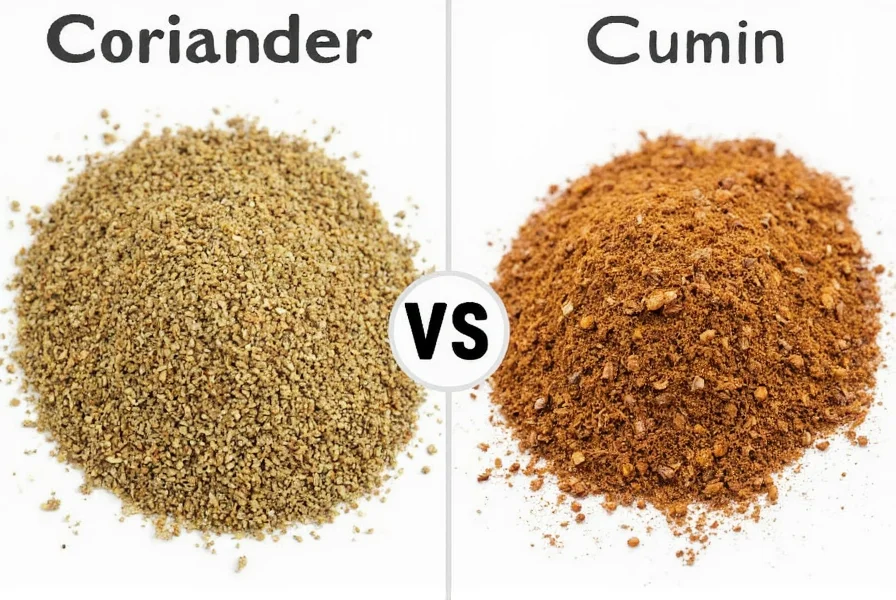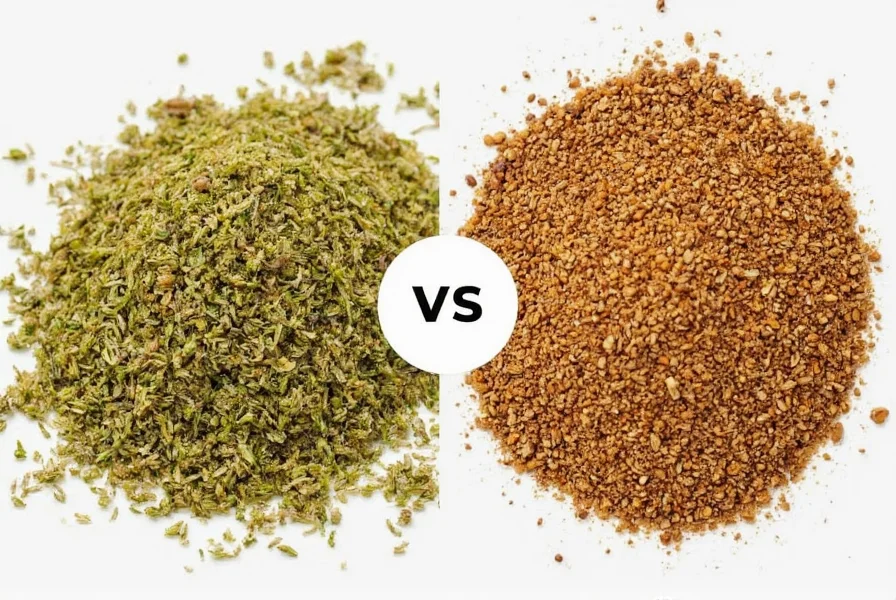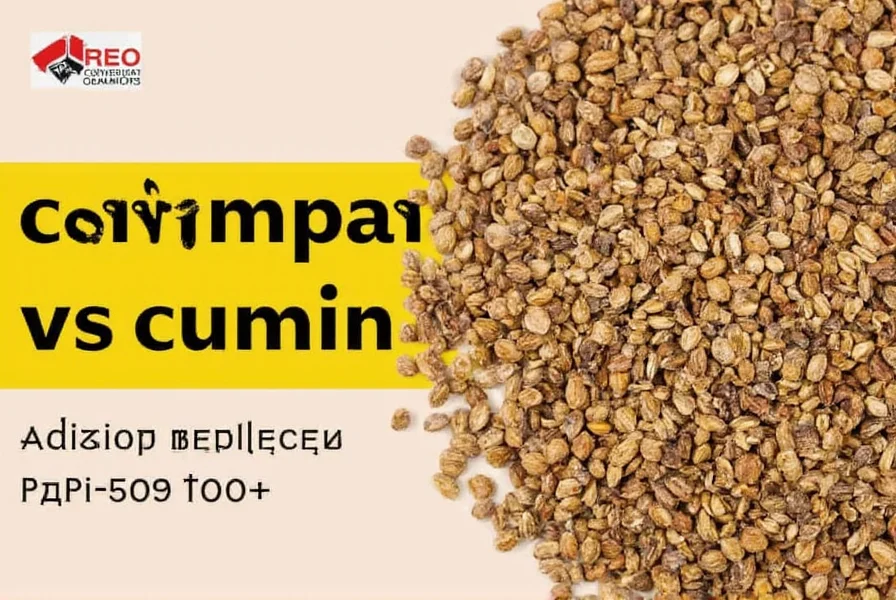Many home cooks and even experienced chefs often mix up coriander and cumin, leading to unexpected flavor results in recipes. This confusion stems partly from similar packaging in stores and inconsistent labeling across different regions. Understanding the difference between coriander and cumin is essential for authentic cooking across various global cuisines.
What Exactly Is Coriander?
Coriander refers to the dried seeds of the Coriandrum sativum plant, which is the same plant that produces cilantro leaves. In many parts of the world, particularly in the UK and Commonwealth countries, "coriander" describes both the fresh leaves and the dried seeds. In the United States, "coriander" typically refers only to the seeds, while the fresh leaves are called "cilantro."
Coriander seeds have a light brown color, round shape, and diameter of about 3-5mm. When crushed or ground, they release a distinctive citrusy, slightly sweet aroma with floral notes. The flavor profile is mild, bright, and lemony, making it versatile across multiple cuisines.

Understanding Cumin: More Than Just a Spice
Cumin (Cuminum cyminum) belongs to the Apiaceae family, the same as parsley and celery, but is botanically distinct from coriander. Cumin seeds are actually the dried fruit of the cumin plant, appearing as slender, curved seeds with longitudinal ridges.
Visually, cumin seeds are darker (light to medium brown), longer (4-8mm), and more elongated than coriander seeds. They have a distinctive warm, earthy aroma with subtle smoky notes. When toasted properly, cumin develops a rich, almost nutty flavor that forms the backbone of many spice blends worldwide.
Key Differences Between Coriander and Cumin
| Characteristic | Coriander | Cumin |
|---|---|---|
| Botanical Source | Coriandrum sativum (same plant as cilantro) | Cuminum cyminum |
| Seed Appearance | Round, light tan, 3-5mm diameter | Elongated, curved, medium brown, 4-8mm |
| Flavor Profile | Citrusy, light, slightly sweet, floral | Earthy, warm, slightly smoky, pungent |
| Common Culinary Uses | Indian curries, Middle Eastern dishes, pickling, baking | Mexican cuisine, Indian garam masala, North African tagines |
| Substitution Possibility | Lemon zest + a touch of caraway (limited substitute for cumin) | Coriander cannot adequately replace cumin's distinctive flavor |
Flavor Chemistry: Why They Taste So Different
The distinct flavor profiles stem from different chemical compositions. Coriander's primary flavor compound is linalool (60-70% of essential oil), which gives it that characteristic citrus note. Cumin's dominant compound is cuminaldehyde (25-35%), responsible for its warm, earthy character.
When cooking with whole seeds, the toasting process affects each spice differently. Coriander seeds benefit from gentle toasting to enhance their citrus notes without becoming bitter. Cumin seeds require slightly higher heat to release their full flavor potential but burn more easily than coriander.
Culinary Applications: When to Use Each Spice
Understanding coriander seeds vs cumin seeds in practice is crucial for authentic cooking:
- Coriander excels in: Indian dishes like dhania jeera powder, Middle Eastern za'atar blends, Scandinavian breads, pickling recipes, and as a complement to fish and poultry
- Cumin shines in: Mexican chili powders, Indian garam masala and curry blends, North African tagines, Middle Eastern falafel, and hearty bean dishes
Professional chefs often toast whole coriander seeds before grinding to maximize their citrus notes, while cumin seeds are typically toasted until fragrant but not browned to avoid bitterness. The difference between coriander and cumin becomes especially apparent in spice blends—substituting one for the other dramatically alters the final flavor profile.
Substitution Guidance: Can You Swap Them?
While many online sources suggest substituting coriander for cumin or vice versa, culinary experts generally advise against this. The coriander vs cumin substitution question has no perfect answer because their flavor profiles are too distinct.
If you must substitute:
- Replacing cumin: Use equal parts coriander plus a pinch of smoked paprika and a tiny bit of caraway seed for approximation
- Replacing coriander: Try lemon zest with a touch of fennel seed, though results will vary significantly
For authentic results in traditional recipes, using the correct spice matters. The coriander and cumin difference isn't merely semantic—it affects the fundamental character of dishes.
Storage Recommendations for Maximum Flavor
Both spices lose potency over time, but at different rates. Whole coriander seeds maintain freshness for 1-2 years when stored properly, while ground coriander lasts only 6-8 months. Cumin, being more volatile, has a shorter shelf life—whole seeds stay fresh for 6-12 months, and ground cumin for 3-6 months.
For best results, store both spices in airtight containers away from light and heat. Many chefs recommend buying whole seeds and grinding them as needed, especially for cumin, which loses its distinctive aroma quickly when ground.
Common Misconceptions Clarified
Several persistent myths confuse the coriander vs cumin discussion:
- Myth: Coriander and cumin are the same plant
Fact: They come from completely different botanical families - Myth: Cilantro and coriander are different plants
Fact: They're the same plant—cilantro refers to leaves, coriander to seeds - Myth: You can freely substitute one for the other in recipes
Fact: Substitution dramatically changes flavor profiles
Understanding these distinctions helps cooks navigate international recipes more confidently, especially when encountering regional naming differences.
Conclusion: Mastering the Coriander-Cumin Distinction
Recognizing the fundamental differences between coriander and cumin elevates your cooking from good to authentic. While both spices enhance global cuisines, their unique flavor profiles serve specific purposes that shouldn't be interchanged without careful consideration. By understanding the coriander and cumin difference, you'll create more balanced, authentic dishes that honor culinary traditions worldwide.

Frequently Asked Questions
Are coriander and cumin the same spice?
No, coriander and cumin are completely different spices from different plants. Coriander comes from Coriandrum sativum (the same plant as cilantro leaves) while cumin comes from Cuminum cyminum. They have distinct flavors, appearances, and culinary uses.
Can I substitute coriander for cumin in recipes?
While possible in a pinch, substituting coriander for cumin (or vice versa) significantly alters the flavor profile. Coriander has a citrusy, light flavor while cumin is earthy and warm. For cumin substitution, try coriander plus a pinch of smoked paprika and caraway. For coriander, lemon zest with fennel seed offers limited approximation.
Why do people confuse coriander and cumin?
Confusion stems from similar packaging in stores, regional naming differences (where 'coriander' sometimes refers to both leaves and seeds), and their frequent appearance together in spice blends. Additionally, both are small, brownish seeds that might look similar to untrained eyes.
Which spice lasts longer, coriander or cumin?
Whole coriander seeds generally maintain freshness longer than cumin—about 1-2 years versus 6-12 months for cumin. Ground versions have shorter shelf lives, with ground coriander lasting 6-8 months and ground cumin only 3-6 months due to cumin's more volatile essential oils.
What's the main flavor difference between coriander and cumin?
Coriander has a light, citrusy, slightly sweet flavor profile dominated by linalool, while cumin offers a warm, earthy, slightly smoky taste from cuminaldehyde. Coriander works well with delicate dishes, while cumin provides bold depth to heartier recipes.











 浙公网安备
33010002000092号
浙公网安备
33010002000092号 浙B2-20120091-4
浙B2-20120091-4